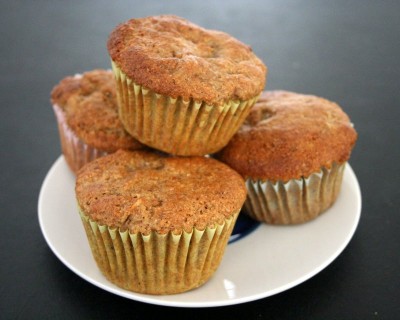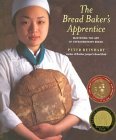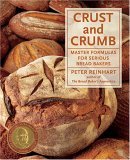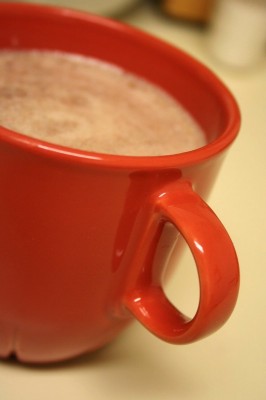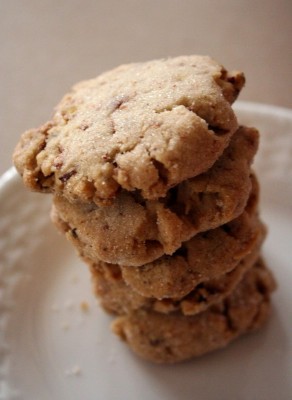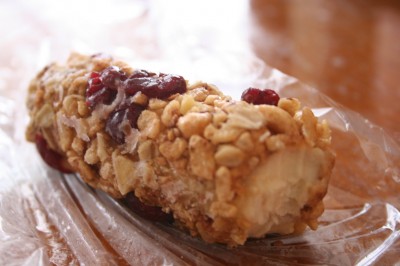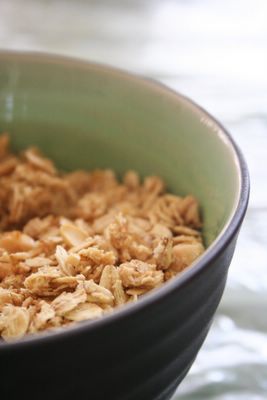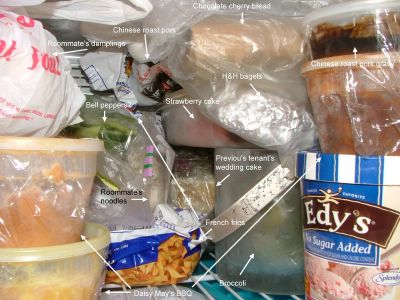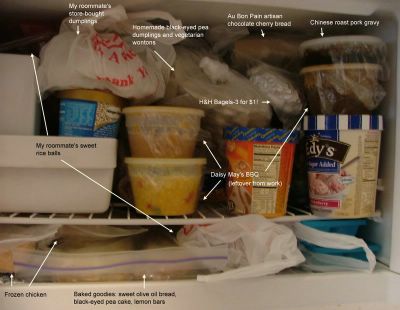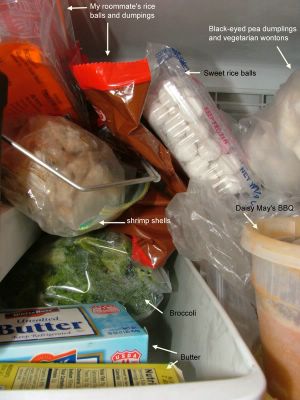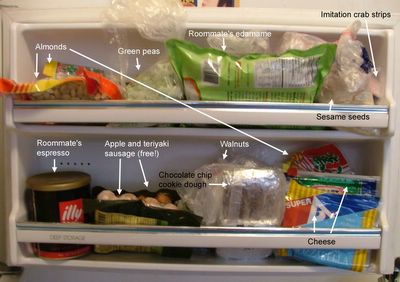Sour ‘doh! Muffins
According to an online quiz, my ideal pets are rocks and hermit crabs. Pet rocks are nice because they live forever and never have to be fed or cleaned. Believe it or not, there are more unusual pets to be had, such as wild yeast. Yeast is in bread of course, but it also floats throughout the air. Before modern days, bread bakers could not go to the supermarket and pick up packets of yeast. They had to cultivate wild yeast in a sourdough starter, which was made by letting flour and water sit out for for several days at room temperature. The idea is for the starter to go “bad” and attract natural yeast in the air. This time-honored tradition makes crusty artisan breads, such as baguettes, taste so good.
There are several ways to ferment flour. Nancy Silverton’s Breads from La Brea Bakery uses grapes, while others insist that rye flour is easiest to work with. See The Fresh Loaf and The Amateur Gourmet‘s chronicles for more info. To build a starter, it needs to be fed with flour every day for about a week. With all the fuss, you can easily run into problems.
In Kitchen Confidential, chef Anthony Bourdain described getting a late-night phone call from his baker, who insisted that Bourdain “Feed the b—-, or else she’ll die.” The baker was referring to a beloved 250-pound batch of sourdough that he kept in his apartment. For one reason or another, the baker was away, and Bourdain had to brave his way into the apartment to save his restaurant’s bread.
If I weren’t a baker, I’d much rather keep a pet bird or better yet, a rock. But as a recipe tester for Peter Reinhart‘s new whole-grain bread book (due out in 2007), I had to keep pet bacteria. The problem with sourdough is that it inevitably involves waste. Every time you feed the yeast, you end up with a bigger blob that can potentially take over your kitchen. You’re supposed to throw away some starter or flush it down the toilet, but I don’t like wasting anything.
For a while, I used the excess starter for crumpets (thanks to The Baking Sheet for the tip), but I grew tired of them. After some googling, I found that sourdough can also be used to leaven muffins. This recipe from Sourdough Home makes the closest thing to cake for breakfast without inducing guilt. A tip: if you’re using whole-wheat starter, use white flour for the main dough, or else your muffins will be extra wheaty and coarse.
How else can do you use excess starter? How do you convert regular quick bread recipes to incorporate sourdough?
Resources to tide you over until Reinhart’s new book comes out:
Reinhart’s excellent recipe for NY-style bagels
Free sourdough starter (with SASE) if you’re too lazy to make your own.

